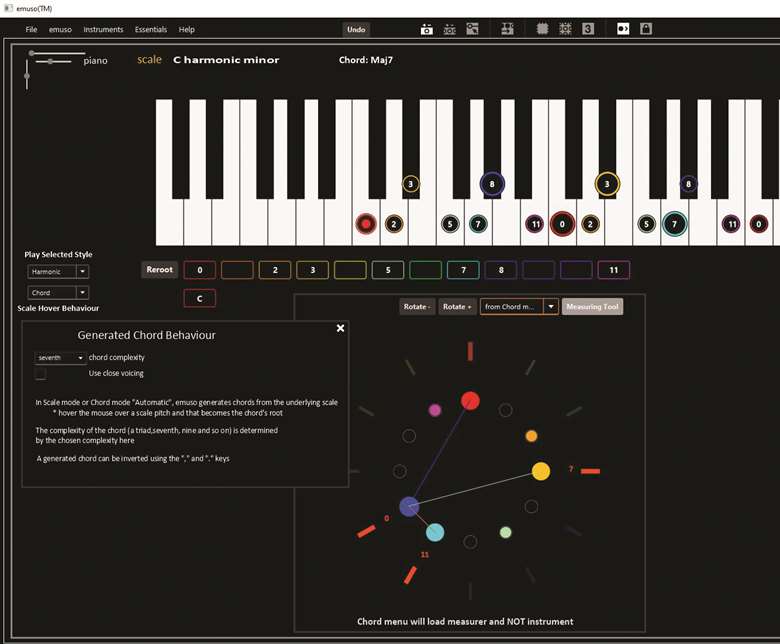Q&A: Jerry Kramskoy
Harriet Clifford
Tuesday, December 1, 2020
Jerry Kramskoy is the CEO and CTO of emuso – educational software aimed at simplifying music theory for players of all levels. Harriet Clifford catches up with him to learn more

HC: What inspired you to develop emuso?
JK: I found that many people really struggle to get to grips with music theory, so they end up hitting a brick wall. They will copy other people, but they won't understand what they're doing, so when it comes to trying improvisation, they are completely stuck. One effective solution to this is to deprioritise note names, and instead emphasise intervals, which are the atoms that all tonal music is built on. The software can switch between note names and interval names or semitone distances to expose the musical relationships formed over time. Rhythm, too, can be given a visual representation for note onset and duration.
HC: So, what is emuso?
JK: Emuso is a hybrid app for Windows 10 and macOS [10.12 and up]. Its raison d’âtre is to eliminate the [above] confusion, and help people quickly and simply develop the skills, including technique, needed to improvise and write music, enabling them to explore and understand music sounds from day one. The design focuses on intervals throughout, shown as colour-coded circles on a virtual instrument – such as a guitar, piano, or bass – and on a clock ‘instrument’. These are all visually and aurally interactive and the instruments can be changed at any time, with the contents being adapted to match. It's for anyone who wants to take their playing up a notch, from beginner all the way up to as advanced as you like.
HC: Why do you think it will help music teachers?
JK: Because it's very visual, it makes it easy to explain musical concepts to people who are new to theory. I've tried it with my granddaughter, who knew nothing about music and she'd never touched a piano in her life. It took six minutes from her knowing nothing to her sitting at the keyboard playing the major scale in two different keys. She didn't know the name of a single note on that piano. Then she played a couple of major triads from each of those scales, again not knowing a single note. The end result was that she was then mega motivated – I couldn't get her off the damn thing after that.
HC: Do you think learning a musical instrument without notation is limiting in any way?
JK: I think it depends on why you're learning music. There are plenty of people who can happily experiment, as long as they understand what fits with what. I've been a professional musician in the past and I've never had to read music. But I understand the theory well enough, so I know what goes with what.
HC: Can you tell me a bit about your own background?
JK: When I was nine I did a swap with a kid in South Africa – I had an ancient rusty old bike and he had a dodgy old guitar, so we swapped and that's what started me off. I've been playing ever since then and have been in a professional band, which was signed briefly to EMI when I was in my early twenties. I went back to it in my early thirties and enrolled at the Guitar Institute in Acton. I met Shaun Baxter there, who gave me private lessons for years. In terms of tech, I co-founded a company which ended up in Silicon Valley, then went to the BBC to lead their mobile research, before going full-time on emuso.
HC: What do you think the future of music education looks like?
JK: I suspect it's going to be quite a mix between traditional forms of education and much more technology-based learning. I think there's going to be more of a balance between learning classical music and more modern stuff too. We'll have to see how it pans out with the government, because what's going on right now is not too clever. In terms of funding for schools, it's all looking quite strained.
Monthly, six-monthly, or annual subscriptions are available for emuso/Studio, with a free 14-day trial.
emuso/Foundry, an enhanced software product for teachers and schools, will be released soon.
To sign your school up to help trial the product, get in touch at info@musicincite.buzz. For more details, visit emuso.buzz.

